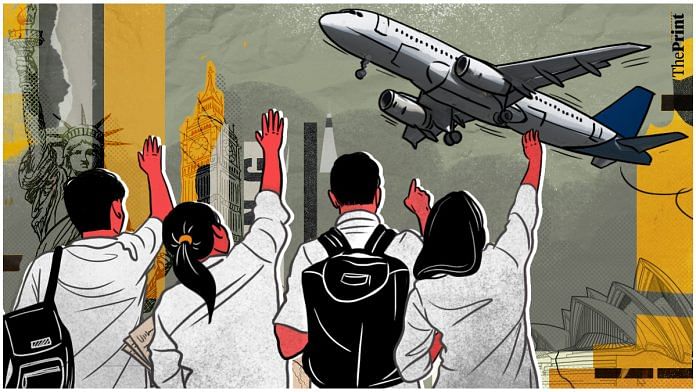The so-called ‘First world’ – the United States, Canada, Australia, and Northern Europe – has long been the ultimate dream for many Indians. A place to study, work, and if luck permits, call home. Just look at the sheer effort Indians put into making their way there—whether through legal routes or risky, illegal ones. The relentless pursuit of a better life abroad highlights the sheer depth of this aspiration.
But the reality on the other side is shifting. The doors aren’t as open as they once seemed. If anything, political trends suggest that protectionism and resistance to immigration are only growing. The message from these nations is getting clearer: Getting in isn’t as easy as it used to be, and staying is even harder.
After Donald Trump took office, India started buzzing with stories of illegal immigrants risking it all for their American Dream – from staggering amounts of hard-earned money to their very lives. For many, this just doesn’t add up. If someone has that kind of money, and a relatively stable life at home, why go through the ordeal of illegal migration at all?
The elusive American Dream
What people don’t always get is that this dream to be part of the Western world isn’t just about getting financial opportunity. For some Indians, it signifies something deeper—a longing to be part of a world that holds a certain privilege, a status that money alone can’t buy. It’s not just about wealth; it’s about belonging to a system, a society, a way of life that feels out of reach back home.
While illegal immigration has always been a talking point, things are shifting even for those taking the legal route to study, work, or settle abroad. The numbers tell a story of their own: 331,602 Indian students are in the US as of 2024 – 23 per cent more than the previous academic year – while 427,000 are enrolled in Canadian institutions.
But beneath these figures, there’s growing anxiety. With changing policies and shifting political rhetoric on immigration, students in both countries are starting to feel the heat. The question isn’t just about getting in anymore—it’s about what happens next. Will they still have the same opportunities? Or is the door slowly closing on those hoping to turn student visas into long-term stays?
During his first term, Trump built his immigration policies on the “lump of labour fallacy”—the flawed idea that new workers must compete for a fixed number of jobs. Using this logic, his administration blocked visa holders and immigrants during the Covid-19 pandemic, threw new obstacles in the path of foreign-born scientists and engineers, and tightened immigration rules across the board.
Also read:
Tougher immigration hurdles
It’s no surprise that Indian students weren’t exactly looking forward to Trump 2.0. Even though he had said, in October 2024 on the All-In podcast, that “it’s so sad when we lose people from Harvard, MIT, and other great schools”, and suggested granting automatic green cards for international students who graduate from US colleges. Because words during a campaign are one thing, and actual policy is another. And if history is any indication, the fear of tougher immigration hurdles isn’t misplaced.
There have been reports of Indian students, fearing stricter policies under Trump, cutting back on part-time work. A sign of just how much uncertainty looms over students’ future in the US. Even Canada—often seen as the more immigrant-friendly alternative—is closing its doors due to recent diplomatic tensions.
In 2024, Canadian PM Justin Trudeau announced a reduction in the intake cap for international student study permits in 2025. The Canadian government also set a goal to reduce the share of temporary residents to five per cent of the population by 2026.
This is not it, though. The Trudeau government abruptly terminated the Student Direct Stream (SDS) initiative, a programme that once made visa processing easier for Indian applicants, in November last year. And it didn’t stop there—Canada has also tightened its post-study work visa rules. Now, applicants for the Post-Graduation Work Permit (PGWP) must prove their language proficiency as part of their application. This shift has only added to the difficulties of Indian students who saw Canada as a reliable path to study, work, and eventually settle. Evidently, even countries that were once considered “safe bets” for migration are rethinking their openness.
It should also be noted that Canada is one of the countries that came up with an investment visa programme well before the Trump administration came up with its $5 million-worth ‘gold card’.
However, let’s not make this just about Trump, or paint him as some exclusive champion of the ultra-rich. The bigger issue isn’t the new US president or his policies, but the truth of how global immigration systems operate. The pattern is clear: if you have money, borders are just a formality. If you don’t, good luck navigating the ever-tightening immigration maze. Trump’s gold card visa proposal just spotlights a system that has always favoured the rich.
Amana Begam Ansari is a columnist. She runs a weekly YouTube show called ‘India This Week by Amana and Khalid’. She tweets @Amana_Ansari. Views are personal.
(Edited by Zoya Bhatti)






